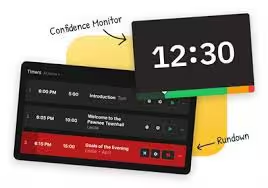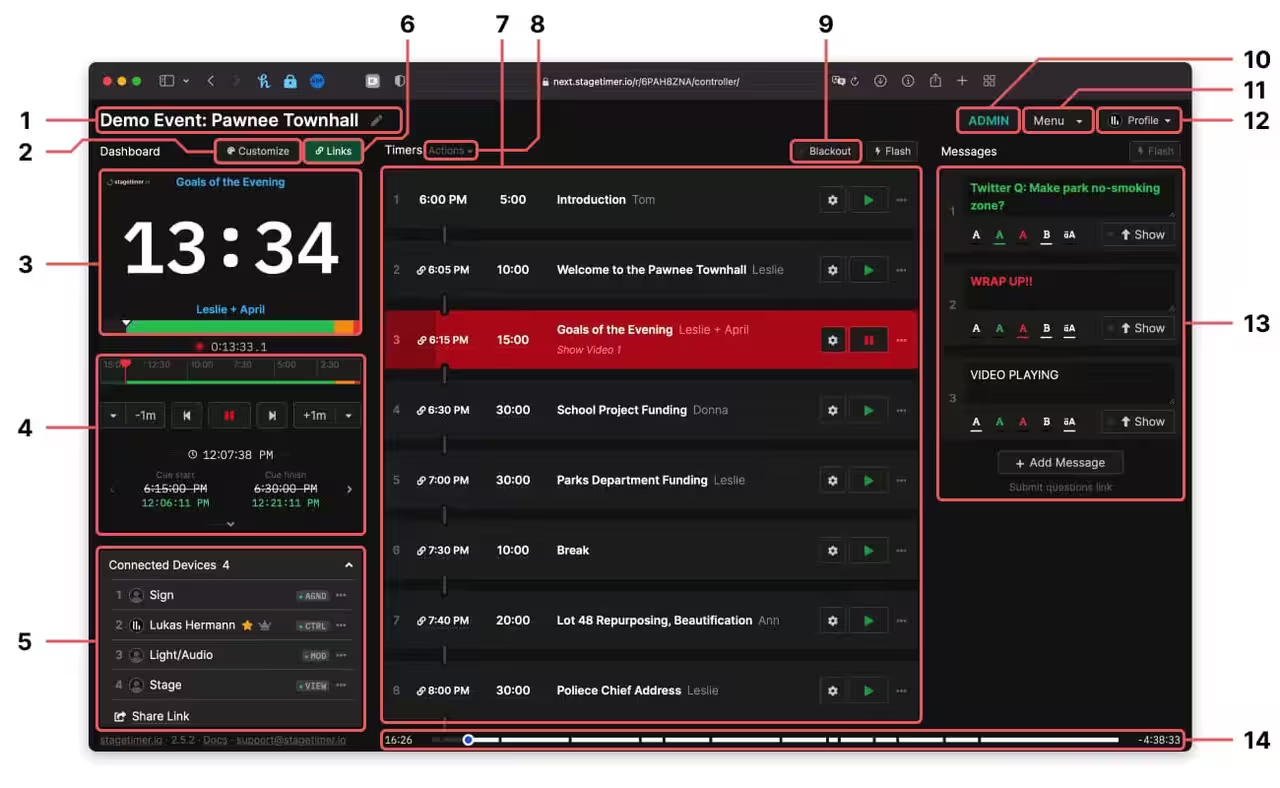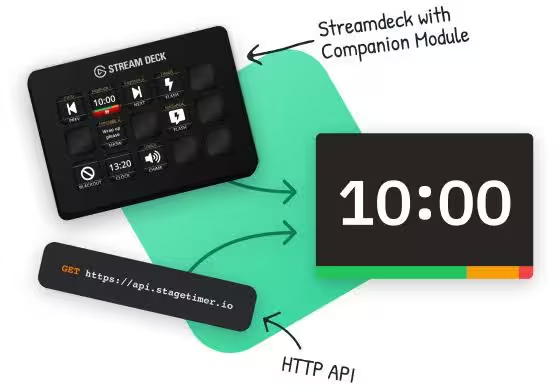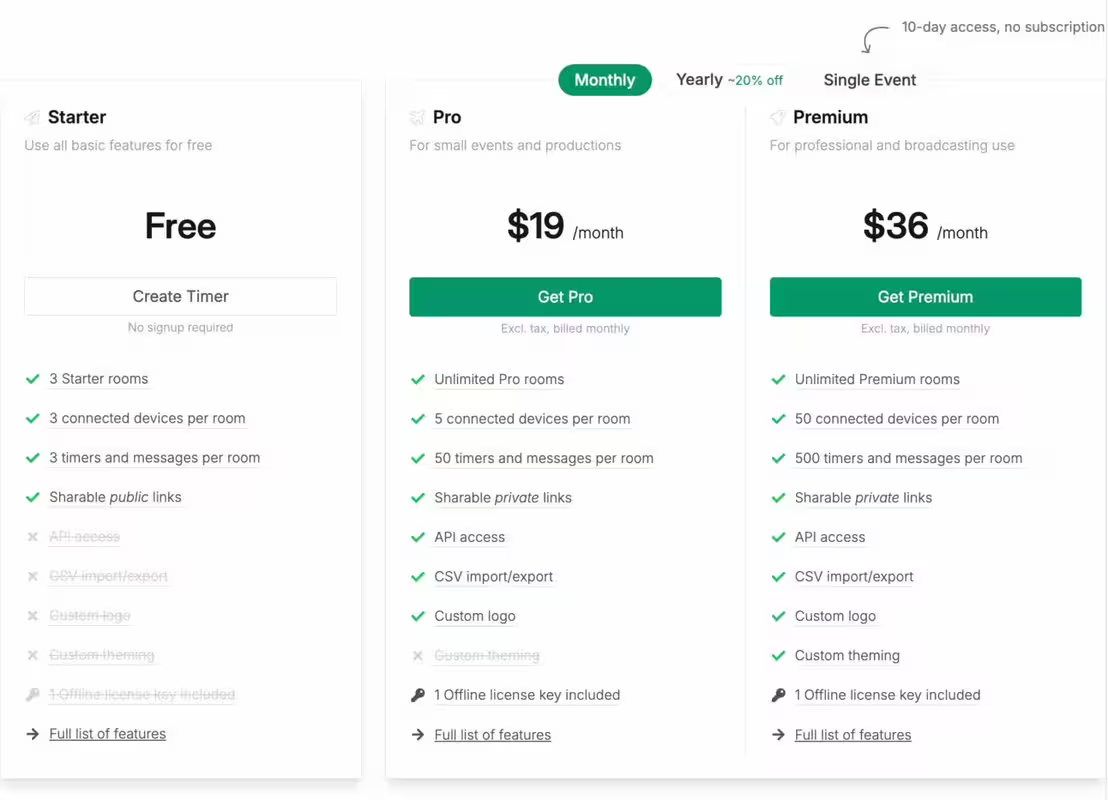

Meet Lukas, a 34-year-old entrepreneur who founded stagetimer.io, an innovative web-based timer application designed for seamless stage presentations, events, and livestreams, featuring coordinating timing across multiple devices.

He started Stagetimer as a side project, balancing it with his day job. He dedicated some weeknights and weekends to working on it, which made progress slow and challenging at times. Despite the hurdles, he persisted for around 1.5 years before deciding to quit his day job and go full-time with Stagetimer. At that point, the business was generating approximately €3000 per month.
After making the leap, he and his wife made the bold decision to cancel their apartment and embark on a six-month journey through Asia. Upon their return, Stagetimer had grown to the point where it could cover all their living expenses in Germany. Interestingly, they discovered that travelling in affordable Asian countries was actually cheaper than living in most German cities, given the current cost of living. This experience allowed him to focus on his business and enjoy a newfound sense of freedom and financial stability.

He started Stagetimer with a spark of inspiration from a visit to a friend’s studio, where he saw an outdated Flash app being used to time speakers. This clumsy process led him to think, "There must be a more efficient solution.” After researching, he found a gap in the market – no browser-based solutions existed, only native apps. He then built the first version of Stagetimer in just one weekend and made his first commit on November 1, 2020.
His journey gained momentum when a Reddit post led to his first user three weeks later. He officially founded a company in February 2021 and secured his first paying customer in June 2021. Fast forward to September 2023, his dedication led to a remarkable achievement - €10,000 Monthly Recurring Revenue (MRR). Through his journey, he demonstrated the power of innovation, determination, and identifying a genuine need in the market.

He acquired his first initial customers by offering Stagetimer online for free, labelling it as “Beta” to evaluate interest and gather feedback. This approach allowed him to validate the app’s potential without initially focusing on pricing. By sharing the link on Reddit, he observed users not only trying it out but also returning to use it again, providing the necessary validation to move forward. This strategy helped him test the market, gather insights, and build a foundation for future growth.
He discovered his target audience by searching for relevant communities on Reddit, eventually finding the r/CommercialAV subreddit. Although it wasn’t the perfect platform, his post garnered attention and ultimately led to his first customers. However, it took six months to earn his first Euro with Stagetimer, as he had to balance building the product with his full-time job.
The day he rolled out a significant update, he acquired his first paying customer, who had learned about Stagetimer from the initial Reddit post. This milestone validated the product’s value and encouraged him to connect with his early customers. He inquired about their usage, needs, and previous solutions, gathering valuable insights to inform future development.

By understanding his customers’ perspectives, he implemented features that met their needs and refined his marketing approach. He ensured that his product could be found on Google using the same keywords his target audience used to describe it, rather than relying on his own terminology. This customer-centric strategy helped him effectively communicate the value of Stagetimer and attract more users.
Since launching Stagetimer, he has experimented with various marketing strategies to acquire new customers. Through trial and error, he has found that SEO, Google Ads, and word of mouth are the most effective channels for his business. In contrast, Facebook Ads, social media posts, and cold email outreach have not yielded the desired results.
He recommends four low-hanging fruit marketing tactics that have brought good results with minimal effort: creating a clear and concise landing page, developing “Compare to” or “Alternative to” pages for popular products, offering free resources like guides and templates, and posting in relevant subreddits.
He emphasises the importance of providing excellent customer service, as happy customers are the best advertisements. Promptly addressing errors and solving problems is crucial, as ignored issues can lead to negative experiences.

In the long run, he believes SEO is a powerful tool for driving growth. By targeting specific search queries with low competition, he has been able to attract a steady stream of customers. For example, Stagetimer ranks for the search term “timer for presentations,” which generates 134 impressions and 43 clicks per month, resulting in a significant conversion rate.
By focusing on these effective marketing strategies, he has been able to grow Stagetimer’s customer base and establish a strong online presence. His approach serves as a model for other bootstrappers looking to efficiently allocate their marketing resources.
He operates Stagetimer on a freemium model, offering a limited set of features for free and charging for additional features through a subscription-based system with two tiers. This approach allows users to access more advanced features while still providing a basic version for free.

In addition to the subscription model, he also offers one-time packages with a 10-day licence, which caters to the specific needs of his industry. Many clients opt for these packages several times a year, as they can directly forward the cost to their customers without having to split monthly subscriptions.
He is currently working on introducing team billing, also known as per-seat pricing, to generate more revenue from power users. Furthermore, he has planned several features specifically for the most expensive tier to enhance the value proposition for high-end users.
Despite the niche nature of his app, he has found a successful revenue model that meets the unique needs of his customers. While he doesn’t expect exponential growth, he is focused on steady progress and continuous improvement to maintain a loyal customer base.